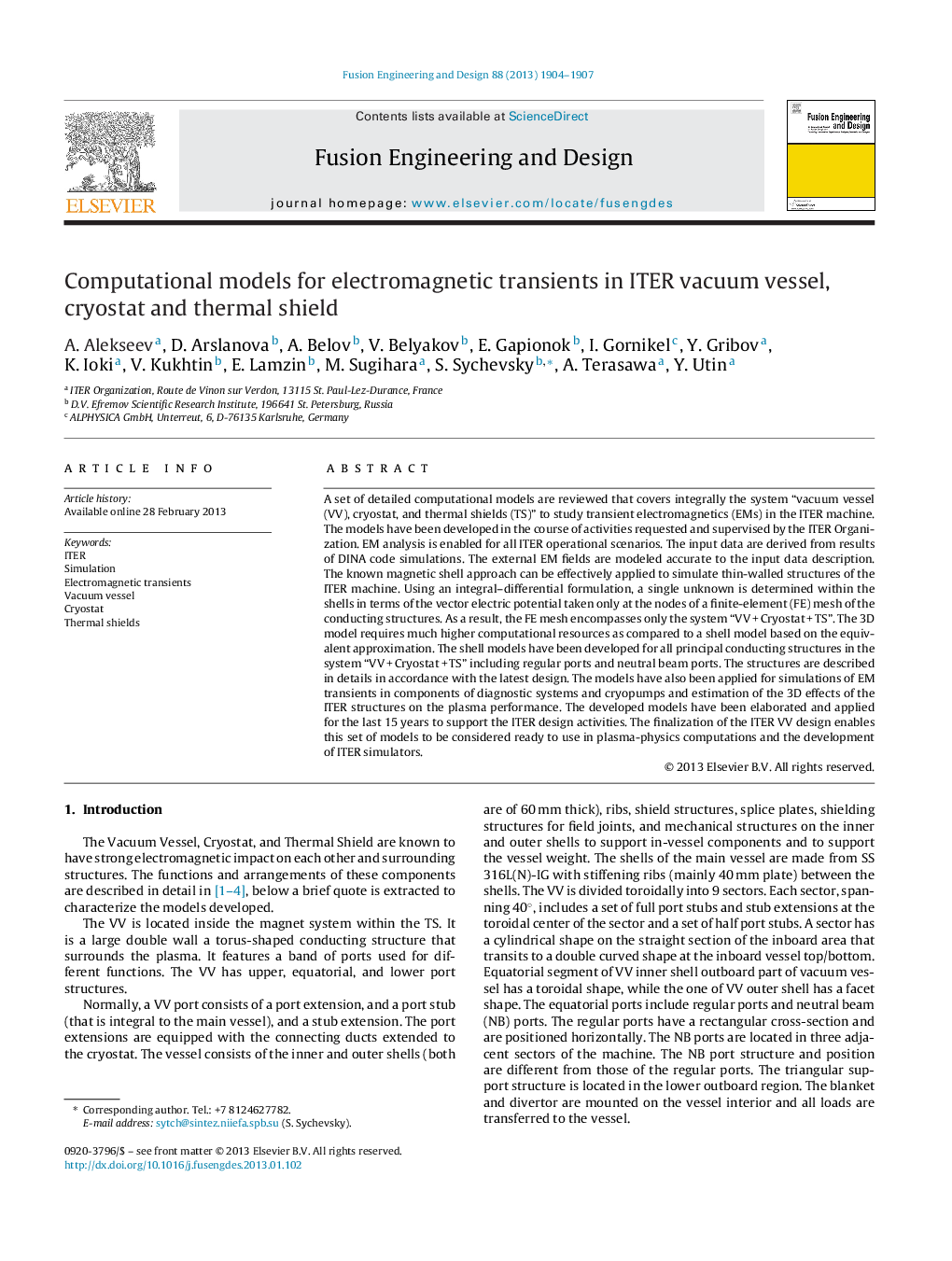| Article ID | Journal | Published Year | Pages | File Type |
|---|---|---|---|---|
| 6746449 | Fusion Engineering and Design | 2013 | 4 Pages |
Abstract
A set of detailed computational models are reviewed that covers integrally the system “vacuum vessel (VV), cryostat, and thermal shields (TS)” to study transient electromagnetics (EMs) in the ITER machine. The models have been developed in the course of activities requested and supervised by the ITER Organization. EM analysis is enabled for all ITER operational scenarios. The input data are derived from results of DINA code simulations. The external EM fields are modeled accurate to the input data description. The known magnetic shell approach can be effectively applied to simulate thin-walled structures of the ITER machine. Using an integral-differential formulation, a single unknown is determined within the shells in terms of the vector electric potential taken only at the nodes of a finite-element (FE) mesh of the conducting structures. As a result, the FE mesh encompasses only the system “VV + Cryostat + TS”. The 3D model requires much higher computational resources as compared to a shell model based on the equivalent approximation. The shell models have been developed for all principal conducting structures in the system “VV + Cryostat + TS” including regular ports and neutral beam ports. The structures are described in details in accordance with the latest design. The models have also been applied for simulations of EM transients in components of diagnostic systems and cryopumps and estimation of the 3D effects of the ITER structures on the plasma performance. The developed models have been elaborated and applied for the last 15 years to support the ITER design activities. The finalization of the ITER VV design enables this set of models to be considered ready to use in plasma-physics computations and the development of ITER simulators.
Related Topics
Physical Sciences and Engineering
Energy
Energy Engineering and Power Technology
Authors
A. Alekseev, D. Arslanova, A. Belov, V. Belyakov, E. Gapionok, I. Gornikel, Y. Gribov, K. Ioki, V. Kukhtin, E. Lamzin, M. Sugihara, S. Sychevsky, A. Terasawa, Y. Utin,
